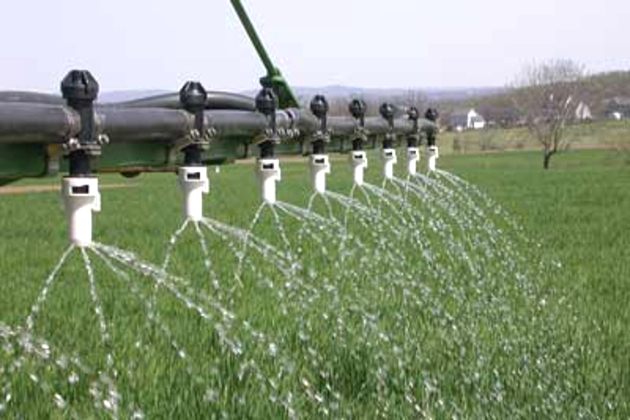5 things to keep in mind for your Linear Regressions to function
7Newswire
08 Jul 2022, 02:32 GMT+10

Today, Data Scientists all over the world utilize linear regression models extensively for a variety of observations. I'm going to provide you a few brief techniques in this blog article that you can use to enhance your linear regression models.
Fit many models:
Consider a range of models, from the overly straightforward to the utterly disorganized. Generally speaking, it's wise to start out easy. Alternatively, if you choose, start out complex, but be ready to rapidly cut things out and switch to the simpler model to better comprehend what is happening. Working with simple models is more of a tool to better understand the fitting process than it is a research goal—we typically find intricate models to be more plausible in the topics we work on.
The requirement to be able to fit models fast follows this principle. Realistically, it's rare to run the computer overnight fitting a single model because you don't know what model you want to be fitting. Wait until you've fitted numerous models and gained some understanding, at the very least.
Exploratory Analysis:
Exploratory data analysis is a crucial stage in developing a solid model.
- It's crucial that you comprehend how your dependent variable interacts with each independent variable and whether or not there is a linear trend. Only then will you be able to employ them in your model to produce quality results.
- Checking and handling outliers, or extreme values, in your variables, is also crucial. This could be one cause for your anticipated estimate values to differ since the outlier values are skewing them.
Graphing the relevant variables:
Are you certain that you want to create those impact diagrams, quantile-quantile plots, and other outputs using a statistical regression package? What will you do with all of that? Just disregard it and concentrate on the straightforward graphs that reveal a model's behavior.
- R square, adjusted R square, coefficient values, and the p-value are some straightforward metrics to evaluate your model.
- You can also try plotting residual plots, testing for heteroscedasticity, and visualizing the model's actual and projected values.
Transformations:
Think about changing everything you see:
- All-positive variable logarithms (primarily because this leads to multiplicative models on the original scale, which often makes sense).
- adjusting the standardization based on the size or possible range of the data (so that coefficients can be more directly interpreted and scaled).
- before multilevel modeling, transformation (thus attempting to make coefficients more comparable, thus allowing more effective second-level regressions, which in turn improve partial pooling).
In addition to transformations, making new variables from old variables is also highly beneficial.
For a retailer, for instance, you could compute Total cost = marketing cost + in-store expenses given the marketing cost and in-store costs.
The objective is to develop models that could make sense and incorporate all pertinent facts. These models may then be fitted to data and compared to them.
We can use the statistical technique of regression analysis between the variables x and y. However, we must first confirm that four presumptions are true before performing linear regression.
Consider all coefficients as potentially varying:
Do not obsess over whether a coefficient 'should' differ by group. Just give it room to fluctuate inside the model, and if the scale of the estimated change is tiny (like the fluctuating slopes for the radon model in Section 13.1), you might be able to ignore it if doing so makes more sense.
The complexity of a model might occasionally be constrained by practical considerations; for instance, we would fit a model with changing intercepts first, then allow slopes to vary, then include group-level predictors, and so on. However, in most cases, the only thing stopping us from including even more complexity, more variable coefficients, and more interactions are the challenges of fitting and, importantly, understanding the models.
Assumptions of regression analysis:
Validity: The study topic you are attempting to address should be mapped onto the data you are analyzing, and the model you are using should incorporate all pertinent predictors and generalize to the cases to which it will be applied.
Representativeness: The sample must be representative of the population because the model's objective is to draw conclusions about a wider population.
Additivity and linearity: A linear regression model's most crucial mathematical presumption is that 'its deterministic component is a linear function of the distinct predictors.' y = B0 + B1x1, B2x2, and so on.
Independence of errors: Simple linear regression presumes independent errors from the prediction line (violated in time series, spatial, and multilevel settings).
Equal variance of errors: Probabilistic prediction is hampered by unequal error variance (a fan pattern in the residual plot), but this is typically a minor problem.
Normality of errors: While the distribution of error terms is relevant when making predictions about specific data points, estimating the regression line scarcely warrants attention.
Learn methods through live examples:
Apply sophisticated statistics techniques to issues that are important to you if you want to learn about and use them.
First, use the appropriate data-collection techniques to compile information about the samples.
Understanding the target population is necessary for this.
Determine the overarching objectives of your data gathering and analysis before you start the analysis. Be explicit about what you want to accomplish and consider if you can do so using the data you currently have.
Then, through simulation and visualization, establish a statistical understanding of the data.
 Share
Share
 Tweet
Tweet
 Share
Share
 Flip
Flip
 Email
Email
Watch latest videos
Subscribe and Follow
Get a daily dose of Oakland Times news through our daily email, its complimentary and keeps you fully up to date with world and business news as well.
News RELEASES
Publish news of your business, community or sports group, personnel appointments, major event and more by submitting a news release to Oakland Times.
More InformationUnited States
SectionBoeing links worker bonuses to company-wide performance
SEATTLE, Washington: Boeing has revamped its employee incentive plan, tying annual bonuses for more than 100,000 workers to overall...
US farmers face bankruptcy, economic uncertainty due to USDA freeze
CHICAGO/WASHINGTON, D.C.: Farmers and food groups across the U.S. are laying off workers, stopping investments, and struggling to get...
South Dakota law blocks eminent domain for carbon pipelines
SIOUX FALLS, South Dakota: A new South Dakota law banning the use of eminent domain for carbon capture pipelines has cast doubt on...
US, Canadian farmers face rising fertilizer costs amid trade tensions
WINNIPEG, Manitoba: Farmers in the U.S. and Canada are bracing for soaring fertilizer prices as trade tensions escalate between the...
U.S. stocks stabilize after relentless losses
NEW YORK, New York - A slightly lower-than-expected CPI reading for February helped U.S. stocks to stabilize after some relentless...
US intelligence agency orders DEIA officials to resign or face firing
WASHINGTON, D.C.: Officials working on diversity and inclusion programs at the U.S. Office of the Director of National Intelligence...
International
SectionUS farmers face bankruptcy, economic uncertainty due to USDA freeze
CHICAGO/WASHINGTON, D.C.: Farmers and food groups across the U.S. are laying off workers, stopping investments, and struggling to get...
South Dakota law blocks eminent domain for carbon pipelines
SIOUX FALLS, South Dakota: A new South Dakota law banning the use of eminent domain for carbon capture pipelines has cast doubt on...
US intelligence agency orders DEIA officials to resign or face firing
WASHINGTON, D.C.: Officials working on diversity and inclusion programs at the U.S. Office of the Director of National Intelligence...
CDC study follows measles outbreak amid declining vaccination rates
WASHINGTON, D.C.: The U.S. Centers for Disease Control and Prevention (CDC) is planning an extensive study on possible links between...
US weather agency faces big layoffs under Trump’s civil service cuts
WASHINGTON, D.C.: The U.S. weather agency, NOAA, plans to lay off 1,029 workers following 1,300 job cuts earlier this year. This...
New Mexico reports first measles-related death in over 40 years
SANTA FE: New Mexico: A New Mexico resident who died recently tested positive for measles, marking the state's first measles-related...










